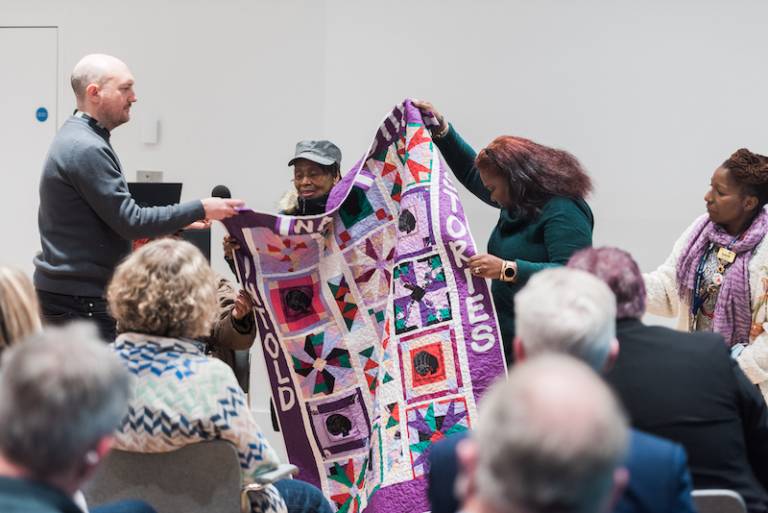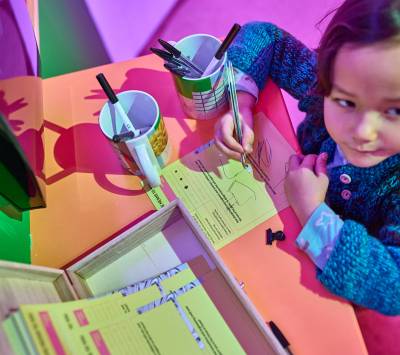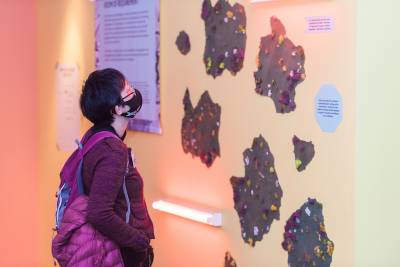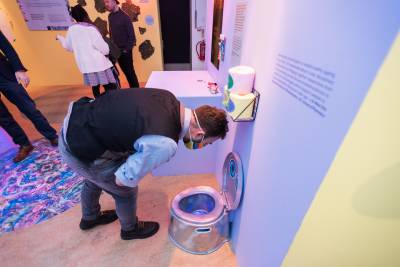Read our report: Looking back on Tomorrow’s Home and exploring the future
27 July 2022
Tomorrow's Home 2050 was an immersive installation where the home of the future – 30 years from now – became a reality.

Drawing upon leading research from the UCL Institute of Healthcare Engineering, it playfully imagined how our dwellings could be designed to help us live independently and well as we age and support our changing planet.
Tomorrow's Home was a UCL collaboration with The Liminal Space and funded by Royal Academy of Engineering's Ingenious programme, involving researchers, artists, designers, engineers, museum leaders and the public.
Visitors witnessed the ways technology was embedded in the lives of three fictional characters – how it supports them to live healthier, more independent lives but also ways it could cross the line from convenient to creepy.



Questions raised during the exhibition:
- Would you prefer to snack on perfectly optimised ‘smart’ food or host healthy microbes on your wallpaper?
- What if your toilet could detect health problems early but also tell your partner you were having an affair?
- Would you offer living space to a climate change refugee?
- With smart sensors installed across the home, how would you ever disconnect?
By posing these provocative questions the hope was to engage new perspectives into current research and technology development.
Visitors filled out questionnaires designed by the IHE and the Liminal Space, in which they responded to the ideas envisioned in the Tomorrow’s Home exhibition. They also gave feedback on how they would like healthcare engineers and scientists to engage with the general public.
We used this information to explore potential future research themes around the concepts of connectivity, sustainability, adaptability, data security, and responsibility.
Of the innovation ideas that were presented in Tomorrow’s Home, those that focused on enhancing personal wellbeing and community cohesion were received most positively by visitors. Smart devices that used personal data for tracking or controversial purposes drew more mixed reactions from visitors, reflected in similar percentages of negative and positive responses. The way that visitors responded to the collection of personal data by smart devices also appeared to be connected to how their functionality was described, with terms such as ‘monitor’ and ‘analyses’ triggering more negative responses than descriptions such as ‘respond to’ and ‘enhance’.
Out of visitors to Tomorrow’s Home:
- 42% reported feeling worried about devices in their home collecting information about them and their health
- 58% strongly or very strongly agreed that Tomorrow’s Home was relevant to them
- 63% strongly or very strongly agreed they had learned something new
Future directions
Although the installation has come to an end, that doesn’t mean Tomorrow’s Home is over. The project sparked several discussions and collaborations around its key topics.
We’re exploring different options to ensure the longevity of Tomorrow’s Home and we look forward to updating you on the progress of new developments when we can.
 Close
Close

